Instructional Videos
Thanks go to London Reels for their
invaluable videos.
Our thanks go also to the Buenos Aires Scottish
Country Dancers, the RSCDS in Aberdeen with Tom Orr and his band,
the RSCDS in Toronto, and the Ochil Scottish Country Dancers, Stirling.
Download the steps for the dances in
Portable Document Format (PDF),
according to the St Andrew's
Ball by clicking here:
 |
|
|

 < Click to listen < Click to listen |
DASHING WHITE SERGEANT
The title comes from the
original lyrics (below), traditionally attributed to the 18th
century General, John Burgoyne. It was set to music by the English
composer, Sir Henry Rowley Bishop in 1826. The song was to be part
of one of Bishop's operas, but there is no evidence it was ever
incorporated into one. It was adapted into a military march and was
the regimental march of the Royal Berkshire Regiment. It quickly
became very popular in the United States both as a song and a dance
tune, and was added to the repertoire of the West Point Military
Academy, where it is still played today at certain events. It has
been suggested that it was the inspiration for I Wish I Was in
Dixie, as the opening bars bear a resemblance. The dance steps
come from the tradition of Swedish circle dancing, that was popular
in Victorian Britain. The better known lyrics shown below, were
written by the Scottish Composer, Sir Hugh S Robertson for the Glasgow
Orpheus Choir.
If I had a beau for
a soldier who'd go,
Do you think I'd say no? No, no, not I!
For a soldier who'd go, Do you
No, no, no, no, no, no, not I!
When his red coat I saw,
Not a sigh would it draw,
But I'd give him eclat for his bravery!
If an army of Amazons ere came in play,
As a dashing white sergeant I'd march away.
Chorus:
A dashing white sergeant I'd march away,
march away,march
away, march away.
March away, march away, march away,
march away, march
away, march away.
|
|
|
|
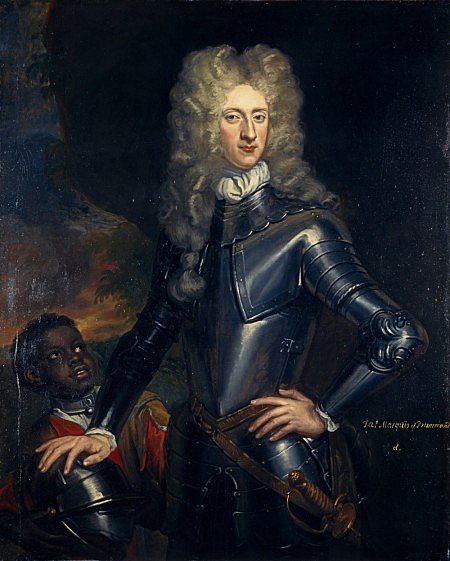
James Drummond
2nd titular Duke of Perth
1673 - 1720
Jacobite |
DUKE OF PERTH
The Duke of Perth is a traditional Scottish Reel,
usually played in G Major. Although called a reel, the tune meets
the criteria for a rant. However, it is usually played at a
considerably slower tempo as a Scottish measure, or country dance,
in 2/4 time. The dance performed to the tune is also called Duke of
Perth and was very popular around Angus, east Fife and Perthshire,
to the extent that it was a feature at various hunt balls in the
region. The dance is also sometimes called The Broons (or Broun's)
reel
Drummond
joined the 1715 Jacobite uprising against the new Hanoverian dynasty
ruling Britain. He
commanded the cavalry at the battle of Sherrifmuir. After the defeat, he fled to Paris and died in exile.
Drummond is shown here with a young black slave, wearing a metal
collar, who gazes up at his master. Although at the time of this
portrait, the boy's equal humanity was denied, Medina has painted
him with warmth and sympathy whilst the Duke seems stiff and remote. |
|
|
|
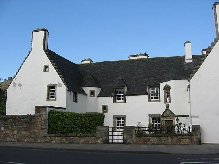
|
HAMILTON HOUSE
Hamilton House is an historic house
in the village of Preston, East Lothian. It's very close to
neighbouring communities of Prestonpans and Prestongrange. The house
was built in 1626 by Sir John Hamilton, brother of Thomas Hamilton,
the 1st Earl of Haddington. It is now owned by the National Trust
for Scotland. |
|
|
|
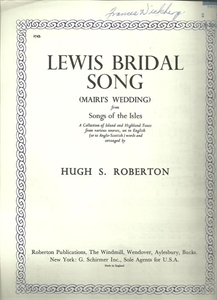
 < Click to listen < Click to listen
|
MAIRI'S WEDDING
Mairi's Wedding is a Scottish folk song that was written in
Gaelic
by Johnny Bannerman for his friend Mary McNiven, a singer.
Tune: The Lewis Bridal Song
|
|
Gaol mo
chridhe-sa Màiri Bhàn,
Màiri bhòidheach, sgeul mo dhàin,
'S i mo ghaol-sa Màiri bhàn,
'S tha mi dol ga pòsadh.
Thuit mi ann an gaol a-raoir,
Tha mo chridh-sa shuas air beinn;
Màiri Bhàn rim thaobh a' seinn,
S tha mi dol ga pòsadh.
Cuailean òir is sùilean tlàth,
Mala chaol is gruaidh an àigh,
Beul as binne sheinneas dàn,
'S tha mi dol ga pòsadh.
'S ann aig cèilidh aig a' Mhòd
Fhuair mi eòlas air an òigh;
'S ise choisinn am bonn òir,
'S tha mi dol ga pòsadh.
Bidh mo ghaol do Mhàiri Bhàn
Dìleas, dùrachdach gu bràth;
Seinnidh sinn da chèil' ar gràdh,
'S tha mi dol ga pòsadh.
|
Sir Hugh Roberton's lyrics
begin with the chorus:
Step we gaily on we go
Heel for heel and toe for toe
Arm and arm and row on row
All for Mairi's wedding
Over hill-way up and down
Myrtle green and bracken brown
Past the shieling through the town
All for Mairi's wedding.
Chorus
Plenty herring plenty meal
Plenty peat tae fill her creel
Plenty bonny bairns as weel
That's the toast for Mairi.
Chorus
Cheeks as bright as rowans are
Brighter far than any star
Fairest of them all by far
That's our darling Mairi.
|
|
|
|
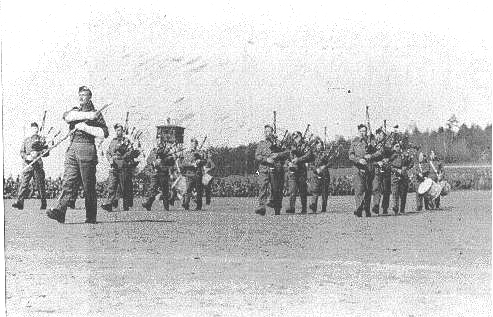 |
REEL
OF THE 51ST DIVISION
One of the most popular
Scottish country dances of all time, the Reel of the 51st Highland
Division is a modern Scottish country dance written by Lieutenant
J E M "Jimmy" Atkinson of the 7th Battalion, The Argyll and
Sutherland Highlanders while in a POW camp (picture taken at Oflag
IIIC) during the Second World War. Captured together with the vast
majority of the British 51st (Highland) Division during the Battle
of Dunkirk in 1940, Atkinson spent the rest of the war as a POW in
Germany. His idea of a reel with a Saint Andrew′s Cross in its key
formation was intended to symbolise Scotland and the Highland
Division, in adversity.
Atkinson's letter home with instructions for the dance was
intercepted by the German security service, the Abwehr, who spent
the rest of the war trying to break the code. However, another
version of the dance reached Scotland where it was published while
Atkinson was still a POW and became instantly popular.
Also known as the Laufen Reel after Laufen Castle near Salzburg, the
51st Country Dance, the Reel of the 51st Highland Division, and St Valery's Reel, it is often danced in a set composed entirely of men. |
|
|
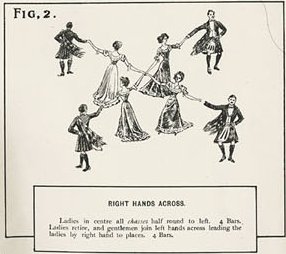 |
EIGHTSOME REEL
The Eightsome Reel
requires no introduction. A great dance, performed in sets of
eight people, this reel gives everyone the chance to perform
solo in the middle of the set. The original tune is a very well
known traditional reel called The De'il amang the Tailors. |
|
|
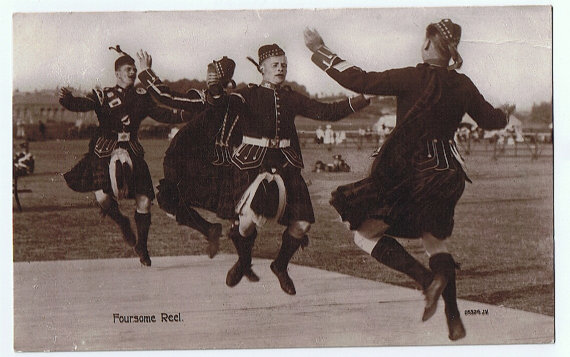 |
FOURSOME REEL (TRADITIONALLY FOLLOWS THE
EIGHTSOME)
This postcard was
addressed to one Bessie Wallace, no doubt a good Scottish girl
from the highlands who appreciates the art of some dance
contestants at a highland gathering. They really catch some air
here with their toe tapping and high kicking. |
|
|
|
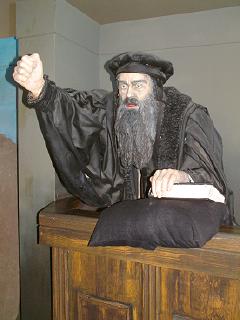
John Knox
(c.
1510?1572) |
SCOTTISH REFORM
The Scottish
Reformation was the process by which Scotland broke with the
Papacy and developed a predominately Calvinist national kirk,
which was strongly Presbyterian in outlook. It was part of the
wider European Protestant Reformation that took place from the
sixteenth century.The Reformation resulted in major changes in
Scottish society. These included a desire to plant a school in
every parish and major reforms of the university system.
John Knox was a
leading figure of the Scottish Reformation
|
|
|
|
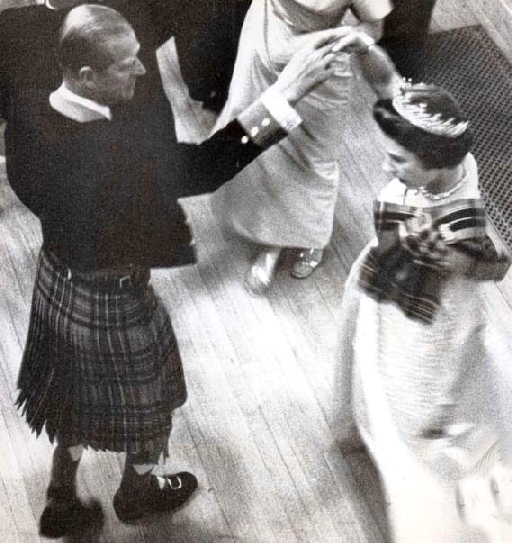 |
THE DUKE AND DUCHESS OF EDINBURGH
This dance originally came out in 1948, when the
current Queen used to be The Duchess of Edinburgh. Her husband,
Prince Philip, of course still uses the title.
The RSCDS included it in Book 39 when it came out in
1996, to celebrate the Queen's 70th birthday, thus making it
"official". |
|
|
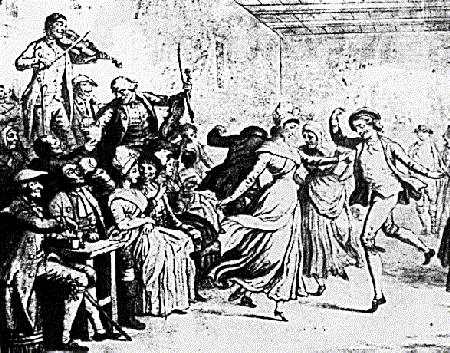 |
INVERNESS COUNTRY DANCE (ABERDONIAN)
Also known as "Speed the
Plough". Presumably from Invernessshire,
a historic county of Scotland. Covering much of
the Highlands, it is geographically Scotland's largest county,
though one of the smallest in terms of population, with 67,733
people or 1.34% of the national population |
|
|
|
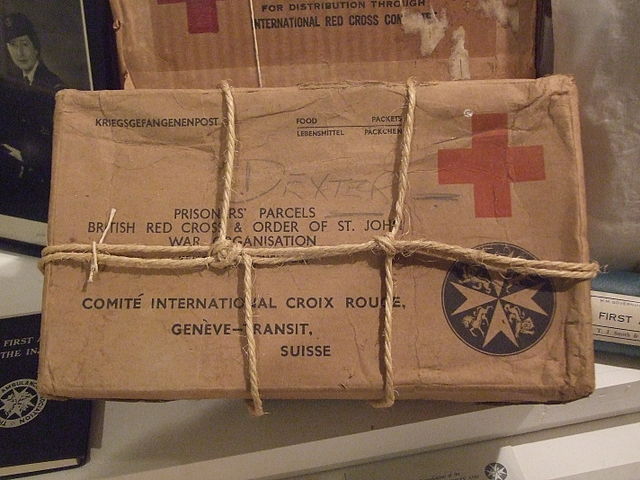
(Click on image to enlarge)
 < Click to listen < Click to listen |
POSTIE'S JIG
The choice of title of this popular,
boisterous dance, devised by Roy Clowes of Ormskirk, is that it symbolises the tying up of a
war-time Red Cross parcel.
Tune "Lassie Come And Dance With Me"
Lassie, Come and Dance With Me
When stars begin to shine.
Lassie, Come and Dance With Me
And say you will be mine.
With our arms around each other,
We're happy as can be.
I'll never love another,
Lassie, come and dance with me.
When the fiddles stop a-tuning'
And the band begins to play;
There's laughter in the music,
And the laddie's heart is gay.
When the lassie of his fancy
By his loving side will cling,
As their hearts beat to the music,
You can hear the laddie sing:
CHORUS
There's a bonnie, bonnie lassie,
And her beauty makes me sigh;
I'd like to be her laddie,
But I'm awful, awful shy.
I hope that she can hear me,
Oh, I hope she's listening
in;
Maybe she will be my dearie,
When tonight to her I sing:
CHORUS
There's a storm outside me roarin'
When
the stars be in the sky,
There's a fire of love a-burning
And a twinkle in your eye.
And the lassie of your fancy
By your loving side will cling,
As your heart beats to the music,
You can hear the laddies sing:
CHORUS |
|
|
|
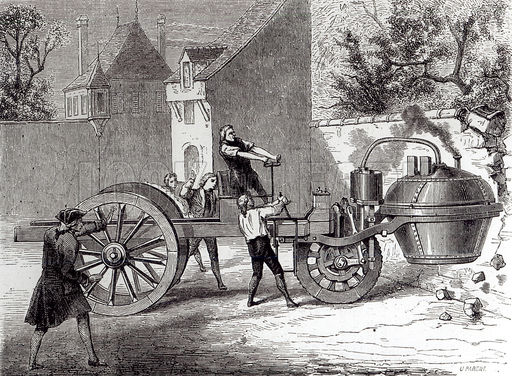
(Click on image to enlarge) |
MACHINE WITHOUT
HORSES The first public
demonstration of a steam carriage (a machine without horses) was by Nicolas Joseph Cugnot in
Paris, in 1769. The following year (1770), Cugnot built a
steam-powered tricycle that carried four passengers.
A dance written in 1772 could have been about this momentous
achievement. |
|
|